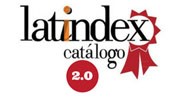The Planning of the ATR Sports Training, Strategic Victory in the High Performance of the Sub 18 Team of Football from Loja
DOI:
https://doi.org/10.69890/hallazgos21.v3i0.221Keywords:
ATR training; methodological theory; football; team sportAbstract
This article raises as research axis the planning of the ATR sports training, strategic victory in the high performance in the football team sub 18 Liga de Loja. The study is based on the socio-historical and cognitive theories of sports training planning. It is a descriptive research, with a pre-experimental design, a mixed qualitative-quantitative approach, inductive, deductive, and analysis and synthesis methods were applied, as well as the application of three phases: accumulation, transformation and realization. It was applied to a sample of 24 soccer players, the data were obtained through the results of the tests applied in the pretest and posttest. It is concluded that the proposed model considerably increases the effectiveness of the components of the preparation of the athlete in the technical, tactical and physical. The application of this ATR model is recommended for the sub 14 and sub 16 categories. Its main contribution is to apply a training methodology rarely seen in football based on ATR training.
References
Carrasco, D. (2014). Teoría y Práctica del Entrenamiento Deportivo.http://www.futbolcarrasco.com/apartados/inef/4curso/9.pdf. (p.32).
Cormack, S (2011). Efecto de los viajes regulares en la periodización. Fuerza Cond. Entrenador. 9:19,24.
Dawson, B (2006). Periodización del entrenamiento de velocidad y resistencia. En: Entrenamiento para velocidad y resistencia. P.R.J. Reaburn y D.G. Jenkins, eds. Sydney, Australia: Allen & Unwin, 76 – 96
Foster, C., J. A. Florhaug, J. Franklin, L. Gottschall, L. A. Hrovatin, S. Parker, P. Doleshal y C. Dodge (2011). Un nuevo enfoque para el monitoreo de entrenamiento. J. Fuerza Cond. Res. 15, 109
Foster, C., L. L. Hector, R. Galés, M. Schrager, M. A. Green, y A. C. Snyder (2011). Efectos de entrenamiento específico versus entrenamiento cruzado en el desempeño en ejecución. EUR. J. Appl. Physiol. 70, 367
Foster, C., K. M. Helmann, P. L. Esten, G. Brice y J. P. Porcari (2014). Diferencias en las percepciones de entrenamiento por parte de entrenadores y atletas. SASMA. 8: 3 rightarrow 7.
Gamble, P (2006). Periodización del entrenamiento para atletas de deportes de equipo. Fuerza Cond. J. 28, 55,56.
Matveev. L. (1985). Fundamento del entrenamiento deportivo. Editorial Lib. Deportivas Esteban Sans, 330.
Navarro, F. (1999). La Estructura Convencional de Planificación del Entrenamiento Versus la Estructura Contemporánea. Revista de Entrenamiento Deportivo. XIII, 5-13.
Paul Gamble. Periodization of Training for Team Sports Athletes. Strength and Conditioning Journal 28(5),56–66.
Román. A – Talens, I, (2013.). Entrenamiento deportivo de alto rendimiento Vol. III, Editorial MAD. S.L, España,37.
Downloads
Published
How to Cite
Issue
Section
License
Los artículos enviados a la Revista Científica Hallazgos21 deberán ser totalmente originales e inéditos.
Los autores son los responsables de los textos y las imágenes incluidas en los artículos y no necesariamente reflejan el pensamiento de la editorial o de la Pontificia Universidad Católica del Ecuador, Sede Esmeraldas (PUCESE).
Los autores disponen cederle a la Revista Científica Hallazgos21 todos los derechos inherentes para la edición, publicación y distribución o divulgación del mismo.
Se autoriza a las revistas firmantes de los acuerdos de Encuentros de Revistas Latinoamericanas para reproducir en parte o totalmente los artículos con la sola mención de la fuente claramente señalada.







